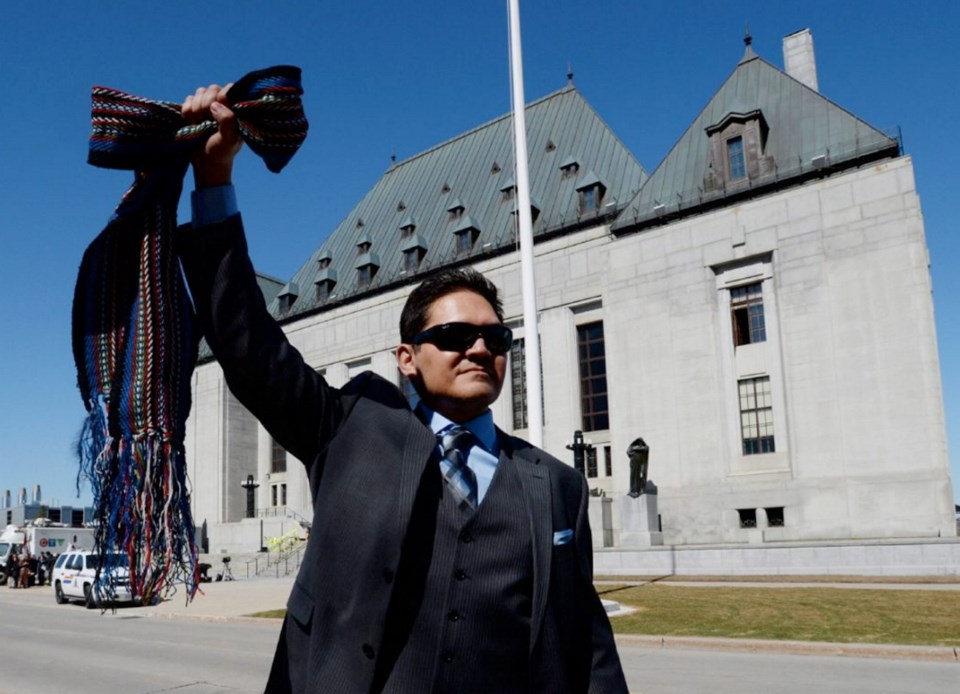The year 2016 was noteworthy for Canada’s Métis. First was the Daniels Supreme Court of Canada decision, which in effect diluted the Métis waters, with the court writing: “There is no consensus on who is considered Métis or a non-status Indian, nor need there be. Cultural and ethnic labels do not lend themselves to neat boundaries. “Métis” can refer to the historic Métis community in Manitoba’s Red River Settlement or it can be used as a general term for anyone with mixed European and Aboriginal heritage.”
Without consensus, the flood gates have opened, as evidenced by the 2016 census.
It tallied almost 588,000 Canadians who self-identified as Métis, a 50 per cent jump from 2006. In Nova Scotia, 27 years ago, there were 225 Métis, but by 2016, there were 23,310. In B.C., the Métis Nation B.C. reports there are 70,000 self-identified B.C. Métis, but only 16,500 registered Métis. The Manitoba homeland had 33,230 in 1991, reaching 89,360 by 2016.
One reason for the bewildering growth could be the 2003 Powley Supreme Court of Canada decision, where the court laid out three nebulous conditions to determine Métis status: Be a member of a present-day Métis community; identify as a Métis person; have ties to a historic Métis community.
So what exactly is a Métis?
It looks as if author Joseph Boyden’s muddy claims would float. No need to get a copy of scrip or track down a baptismal record from 1833. But where do Newfoundland’s professed 7,790 Métis hang their sashes? Come By Chance perhaps? And what exactly does it mean to “identify” as a Métis? Can you identify with the royal family and get on the bejewelled gravy train, or as a white person, identify with black people and write a Civil War novel?
I’ve been a proud Métis since 2011, after completing the demanding, exhaustive process to prove that recent ancestors were French-Canadian and Aboriginal and hailed from Métis central, near Manitoba’s Red and Assiniboine rivers. To go beyond claiming that I was Métis, I had to find Manitoba baptismal records from the early 1800s, because there were no birth certificates.
A piece of Manitoba scrip from 1876 sealed the deal. Signed by my great-great-grandfather, Joseph Hamelin, considered a “half-breed,” he agreed to be “entitled” to 160 acres of land or $160 in the province of Manitoba.
Joseph’s maternal and paternal grandmothers, both named Angelique, were Saulteaux, Ojibwa and Chippewa. His wife Julie was also Métis, with American Indian blood. Back then, Red River carts rolled south to North Dakota during the time when buffalo stampeded across invisible borders.
Why does this matter? Because Canada’s growing Aboriginal population is asserting its rights, as it should. But with that, could it be that court cases, land claims, and the dollars and property that follow restitution are prompting some to get on the bandwagon? Did a robust birth rate or the obsession with finding one’s roots, no matter how shallow, account for the vast growth of the Métis population?
I did not get Métis status to acquire freebies or government handouts. Curiosity and pride in my heritage were motivators. My life is comfortable. Benefits should be left to true Métis who truly need help. It would be unconscionable of me to draw from a limited well, just as it would be for pretenders.
Late last year, I was troubled by the amount of time it was taking to get Métis Nation B.C. paperwork processed and wondered if it had something to do with the wave of those who “identify” as Métis? The Métis Nation states that its programs and services are available to all who merely identify as Métis. They don’t require the citizenship card. My application for a “harvesting” licence would take more than four months to handle due to all the applications.
I sent repeated emails to the nation’s executive asking about this touchy subject and finally got a response from Michael Dumont, the nation’s Vancouver Island director. Dumont told me that the federal government intends to make sure those who claim Métis status possess verification. He added that people who self-identify might not have access to funds, and there are plans to “weed out” those who want to game the system. What it will take is a “verified genealogy,” Dumont said.
Verification is important, because as so-called Métis continue to come out of the woodwork, the meaning of Métis will be eroded. When an Aboriginal ancestor was eight or more generations away, should that count?
Not many countries can lay claim to having people who were a mix of Aboriginals, French and Scottish. They became a distinct people who spawned a colourful culture and language, Michif.
Métis are an intriguing part of Canada’s history and for many years were disparaged and shunned as “half breeds.” Now that the tables have turned, those late to the party want to fallaciously partake in a reservation-only feast.
Shannon Moneo, a freelance writer, lives in Sooke.



